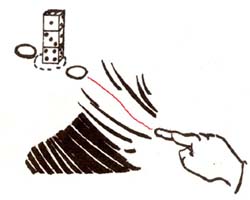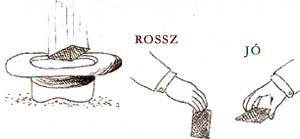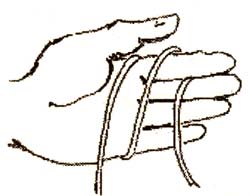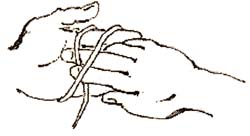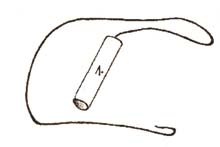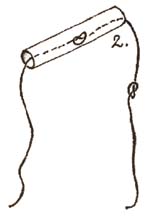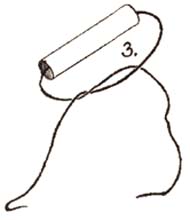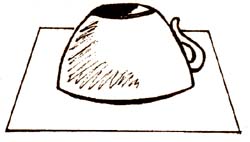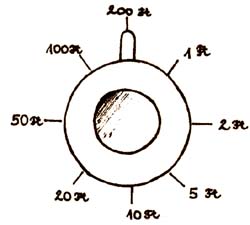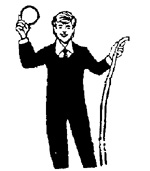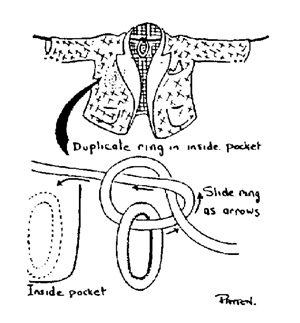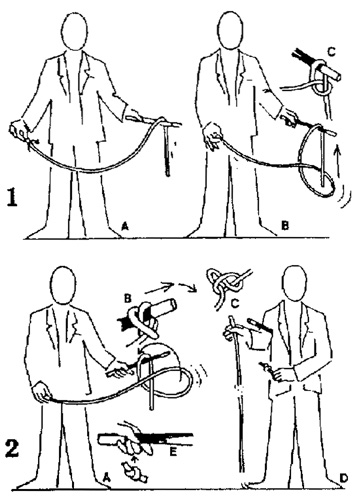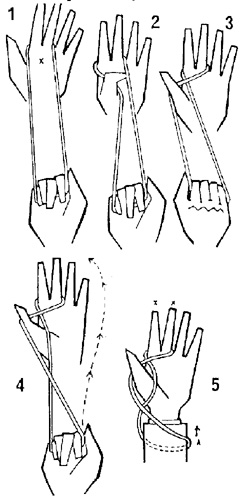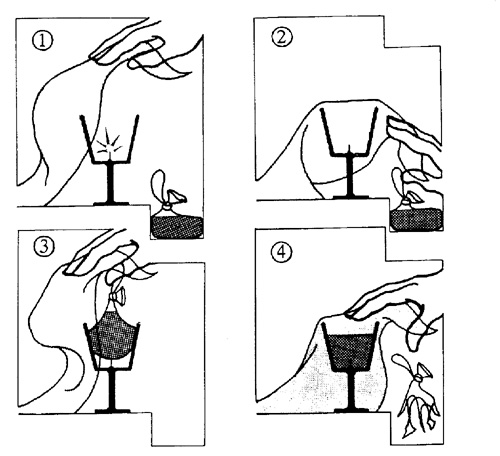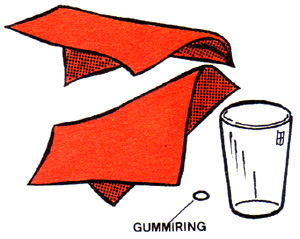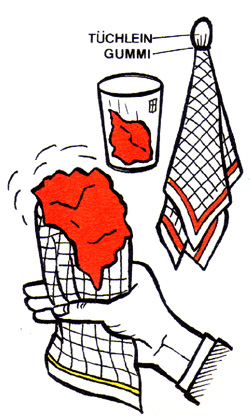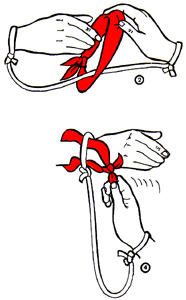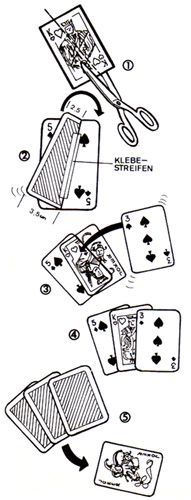| KARTEN-EXPERIMENT
DIE MAGISCHE ZAHL 21
Du übergibst einem Zuschauer einen verschlossenen Briefumschlag mit einer Spielkarte als Voraussage. Ein weiterer Zuschauer wird gebeten, zweimal zu würfeln und die Augenzahlen zusammenzurechnen. Ein dritter Zuschauer erhält ein Kartenspiel mit dem Auftrag, dieses gründlich zu mischen. Du bittest ihn, die der gewürfelten Augenanzahl entsprechende Karte-von oben gezählt-herauszunehmen. Nachdem der Briefumschlag geöffnet wird, stellt sich heraus, daß beide Karten gleich sind.
Für dieses verblüffende Kunststück benötigst du:
1 Kartenspicl
1 Extrakarte
1 Briefumschlag
Papier und Blcistift
2 Würfel
1 Würfelbecher
Ferner mußt du wissen, daß die gegenüberliegende Punktezahl eines Würfels immer 7 ergibt.
Du gibst die Extrakarte in dcn Bricfumschlag, vcrschlicßt ihn und überreichst ihn einem Zuschauer zur Aufbewahrung. Merke dir diese Karte gut! Bitte einen zweiten Zuschauer, mit zwei Würfeln zugleich zu würfcln. Während du dich abwendest, soll er die oben liegenden Augenzahlen zusammenzählen, auf das Papier schreiben und von einem der beiden Würfel díe unten liegende Zahl dazuschreiben. Jetzt nimmt er den Würfel, von dem heide Augenzahlen zusammengezählt wurden, und würfelt nochmals. Nun läßt du die oben liegende Augenzahl ebenfalls dazuschreiben und schließlich von beiden Würfeln die unten liegende Zahl notieren. Die Zahlen werden zusammengerechnet, das Ergebnis wird bckanntgcgebcn – es ist immer 21 .
Während du dich abgewendet oder sógar weiter entfernt hast, suchst du die gleiche Karte, die sich im Briefumschlag befindet, au’s dem gemischten Kartenpaket heraus und legst sie an die 21. Stelle von oben. Wenn dies alles durchgeführt wurde, übcrnimmst du dic Würfcl und gibst dem Zuschauer das Kartenpaket zur Aufbewahrung. Den Zuschauer mit dem ßriefumschlag bittest du, diesen zu üffnen und die Karte zu nennen; der andere, der gewürtelt hat, möge die Zahl nennen (21). Der Zuschauer mit dem Kartenspiel wird gebeten, die 21. Karle von oben aufgedeckt auf den Tisch zu legen. Mit diesem Kartenexperiment hast du wieder cinmal deine magischen Fähigkeiten bewiesen. |




